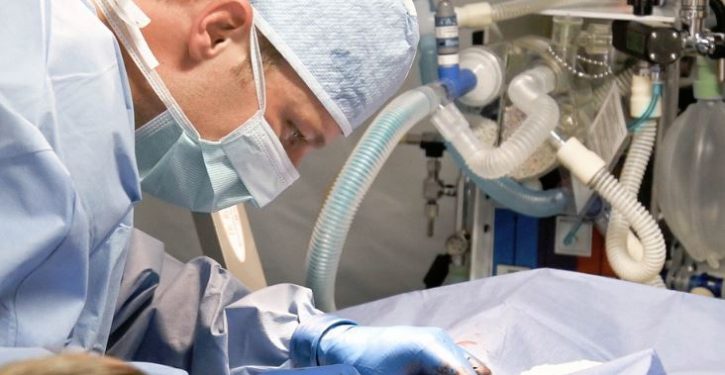
Yiyi used to be deaf. But gene therapy has cured her deafness, by using viruses to add genes to cells in her inner ear. MIT Technology Review describes her transformation:
her family, who live in a high-rise block in the city of Dongguan, enrolled her in a study of a new type of gene therapy. During the procedure, doctors used a virus to add replacement DNA to the cells in Yiyi’s inner ear that pick up vibrations, allowing them to transmit sound to her brain.
In less than a month, her mother says, she was hearing with the treated ear for the first time….now, at school, she can hear the chime that ends naptime. She used to have to wait for the other kids to tell her.
Yiyi is one of several deaf children who scientists in China say are the first people ever to have their natural hearing pathway restored in a dramatic new demonstration of the possibilities of gene therapy. The feat is even more remarkable because until now, no drug of any kind has ever been able to improve hearing.
“We were careful, and a little bit nervous, because it was the first in the world,” says Yilai Shu, a surgeon and scientist at Fudan University in Shanghai who is leading the experiment. His team began the treatments last December, and before that he spent years developing the techniques involved, testing gene injections in countless mice and guinea pigs. “That was my project: How do we deliver this to the inner ear?” Shu says.
In the US and Europe, gene therapy has been notching successes, including restoring limited vision to people with genetic causes of blindness. Now Shu’s study, in which as many as 10 kids have been enrolled, may be remembered as China’s first domestic gene-therapy breakthrough, as well the most dramatic restoration of a lost sense yet achieved.
“Before the treatment, if you put them in a movie theater with the loudest sound, they wouldn’t hear it,” says Zheng-Yi Chen, an associate professor at Mass Eye and Ear, a Harvard-affiliated hospital in Boston, who helped design and plan the study. “Now they can hear close to normal speech, and one can hear a whisper.”
The new treatment will not help everyone who is deaf. It applies only to one specific cause of deafness at birth: a defect in a gene that produces a protein called otoferlin. The inner ear contains about 16,000 hair cells, so called because they have comblike extensions that vibrate to different frequencies of sound. Without otoferlin, these cells can’t transmit the chemicals that relay information to the brain. “These patients basically don’t have a signal coming from the hair cells,” says Chen.
Otoferlin gene defects are the cause of around 1% to 3% of cases of inborn deafness.
China also recently approved the world’s first flying taxi.
Doctors recently used a surgical robot to carry out incredibly complicated spinal surgery. Doctors recently did the first robotic liver transplant in America. Robots can fit in small spaces in people’s bodies that a surgeon can’t reach without cutting through living tissue, or doing other collateral damage.
Robot waiters are spreading in restaurants in Korea.
Artificial wombs could be coming soon, to prevent premature babies from dying or being permanently disabled due to premature life outside the womb. Doctors are already beginning to do womb transplants. A woman who was previously unable to have children recently received her sister’s womb.



